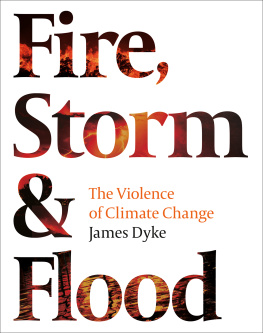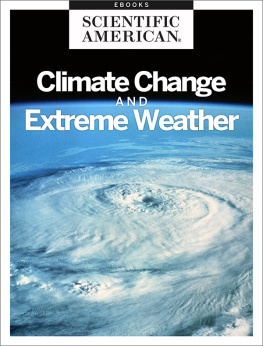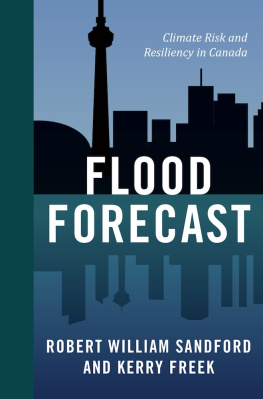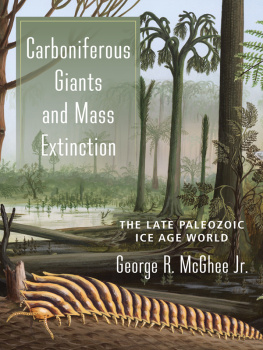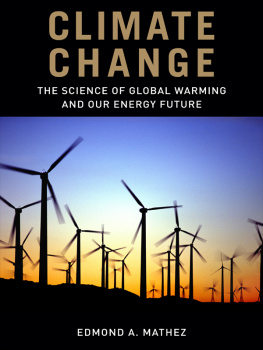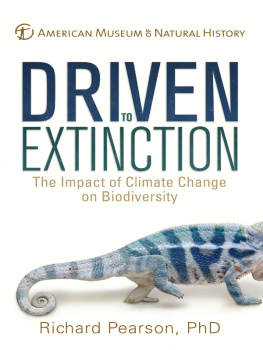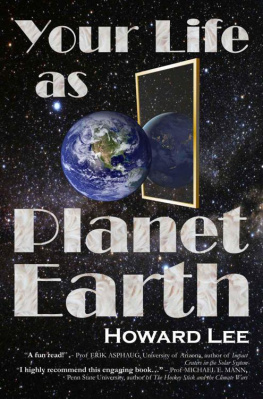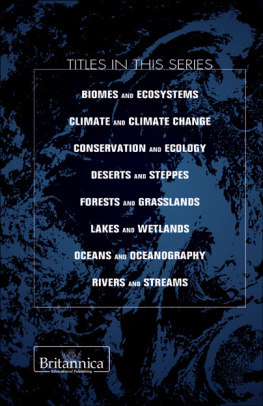Fire,
Storm
&
Flood

NASA: NASA Earth Observatory Joshua Stevens.
Fire,
Storm
&
Flood
The Violence
of Climate Change
James Dyke
AN APOLLO BOOK
www.headofzeus.com
First published in 2021 by Head of Zeus Ltd
by arrangement with UniPress Books Ltd
Copyright UniPress Books Ltd, 2021
Commissioning Editor: Kate Shanahan
Project Manager: Chris Gatcum
Design & Art Direction: Sean Keogh
Picture Research: Alison Stevens
The moral right of James Dyke to be identified as the author of this work has been asserted in accordance with the Copyright, Designs and Patents Act of 1988.
All rights reserved. No part of this publication may be reproduced, stored in a retrieval system, or transmitted in any form or by any means, electronic, mechanical, photocopying, recording, or otherwise, without the prior permission of both the copyright owner and the above publisher of this book.
Authors note: Earths climate and our understanding of it continues to rapidly change. Consequently some of the research used in this book will become dated before its publication, while some of the weather records discussed are sure to be broken in the near future. The author recommends reviewing the latest findings from the Intergovernmental Panel on Climate Change to keep informed.
A CIP catalogue record for this book is available from the British Library.
ISBN (HB): 978-180024-249-4
ISBN (E): 978-180024-298-2
Head of Zeus Ltd
58 Hardwick Street
London EC1R 4RG
www.headofzeus.com
Contents
Earth, our home in the cosmos, is an extraordinarily complex system. Large oceans, an oxygen-rich atmosphere and abundant life produce a diverse and continually changing surface. Seen from space, Earths atmosphere is a thin film that blankets the planet; if Earth were the size of a football, the thickness of its atmosphere would be less than that of a postage stamp. Yet it is within this narrow band that all life on Earth thrives beyond its boundaries lies the inhospitable vacuum of space.
Comparing Earth to its nearest neighbours in the Solar System highlights how special our home planet is. Mars is an airless frozen world. It is possible that life once flourished there, but it would have perished billions of years ago when it lost its oceans and atmosphere. Venus is a hothouse planet. It is hard to imagine how life could survive the extreme temperatures and crushing pressure on the Venusian surface. Earth, however, is in the Goldilocks zone, enjoying a position that is neither too far from the Sun, nor too close.
While Earth is an oasis in which life can thrive, it still experiences extremes in local conditions. During winter, the wind chill in Antarctica would freeze a glass of water solid in seconds. Meanwhile, the surface temperature in Death Valley, USA, can approach an egg-frying 94C. These vastly contrasting temperatures are accompanied by huge differences in rainfall across the globe. Some regions of the Atacama Desert of South America have never recorded rainfall, while Mawsynram in the Meghalaya State in India receives more than 35 feet of rain each year enough to leave Rio de Janeiros Christ the Redeemer statue knee-deep in water. But across the entire planet, differences in local weather can be averaged to produce a planetary climate description. When we do that, we discover that Earth is a moist world with an average temperature of 14C.
Earth has not always been supportive of life, though. There have been periods when it was more like todays Venus or Mars. When Earth was born it was a hellish place, its surface a roiling mass of lava and its atmosphere a lethal cocktail of hot gases. Then, hundreds of millions of years ago it was plunged into a cooling spiral that produced vast ice sheets that almost covered the entire globe. Tens of millions of years ago it experienced rapid periods of warming in which global temperatures transformed the oceans and land surface. These events, and other past climate change episodes, have at times produced mass extinctions in which most of Earths species perished.
It is only very recently that we have discovered that humans have also been affecting the climate. If we compressed the entire 4.6 billion-year history of Earth into a single year, we would see the first life appear in late February and all of human history happen within the last 82 seconds of 31 December. The Industrial Revolution would last for less than one hundredth of a second, and our scientific understanding of greenhouse gases and possible future climate impacts would be less than one thousandth of a second old.
This book tells the remarkable history of climate change on our home planet in three parts, starting with the formation of Earths atmosphere and exploring just how extreme ancient climate change could be. Perhaps the most well-known event is the plunging temperatures and darkened skies that followed a massive asteroid impact and led to the extinction of the dinosaurs. But the effects that life has had on the climate have been even more profound. The evolution of photosynthesis, for example, reshaped the entire biosphere and allowed the emergence of complex vertebrate organisms, including humans. Since then, the fortunes of human civilization have been tightly entwined with the changing climate, and climatic forces that gave birth to great civilizations have also brutally ended them.
The second part of this book tells the story of todays changing climate, and how it has developed over the past two centuries. In many ways, the rapid process of industrialization has made us much more resilient to our turbulent world, but we now know that industrialization also comes with a cost to the climate. Our collective emissions of greenhouse gases has increased the average global temperature by 1C within 150 years. Climate change at such a rate is unprecedented.
It is impossible to claim any particular extreme weather event was caused by human-driven climate change, we are able to say with increasing confidence that recent record-breaking heatwaves, droughts, fires and floods have been made worse by our interference in the Earths climate.
In the final section we peer into our possible future. If the burning of coal, oil and gas is rapidly halted, the conditions at the end of this century will be stabilized, and warming will be limited to around 2C. Adapting to this very rapid warming will challenge societies across the world, but with further efforts, temperatures could be reduced as we enter the next century.
However, if we continue to burn fossil fuels, the world may warm beyond 4C by the end of this century. This would be a profoundly different climate to the one that has nurtured successive human civilizations for the past 11,000 years. Large areas in the tropics would become uninhabitable, with some regions experiencing lethal levels of heat and humidity; coral reefs would vanish, along with huge swathes of tropical rainforests; and lush farmlands would be reduced to desert. It seems unimaginable that humans could produce such devastating impacts on our home planet, but the sheer scale and power of our civilization means we are now capable of transforming Earth into a world of fires, storms and floods.
James Dyke
The First

